Luke Harsel What is Schema? Beginner‘s Guide to Structured Data 63 Wow-Score The Wow-Score shows how engaging a blog post is. It is calculated based on the correlation between users’ active reading time, their scrolling speed and the article’s length. Learn more What is Schema? Beginner‘s Guide to Structured Data Luke Harsel
- 94
- 33
- 1
- 17
- 1
Schema (schema.org) is a structured data vocabulary that defines entities, actions, and relationships on the Internet (webpages, emails, etc).
This vocabulary makes it possible for search engines to understand the meanings behind subject matter (entities) on the web, and in turn, serve a better user experience for Internet users.
As Google continues to build a more semantic web, these markups become increasingly valuable in effective Internet communication.
Types of Schema Markups
The schema.org vocabulary includes formats for structuring data around all kinds of people, places and things on the web. The full list of items that schema markups can define can be found on schema's website here.
One popular branch of the vocabulary is Creative Works, a library of markups for creative content like movies, books, video games, and music among other forms.
These markups can be implemented using different languages of code – including RDFa, Microdata and JSON-LD.
What are RDFa, Microdata, and JSON-LD?
These are all languages of code that can be added to HTML to embed metadata (schema, for example) on a web document.
RDFa stands for Resource Descriptive Framework in Attributes. It is a form of code that can be added to any HTML, XHTML, and XML-based document.
RDFa’s attributes include:
- about – to specify the resource the metadata is about
- rel and rev – to specify a relationship and reverse relationship with another resource
- src, href, and resource – to specify a partner resource
- content – to override the content of the element when using the property attribut
- datatype – to specify the datatype of text specified for use with the property attribute
- typeof – to specify the RDF type of the subject or the partner resource
Microdata implementation is similar to RDFa, and its attributes include the following:
-
itemscope – to create the item and indicate that the rest of the element contains information about it
-
itemtype – to describe the item and properties with a valid URL of a vocabulary (for example, “https://schema.org”)
-
itemprop – to indicate that the containing tag has the value of a specified item property (ex, itemprop=”name”)
-
itemid – to indicate a unique identifier of the item
-
itemref – to reference properties of an element that are not contained in the itemscope. This provides a list of element ids with more properties elsewhere in the document
JSON-LD stands for Javascript Object Notation for Linked Objects. This style of annotation can implement schema by pasting directly in the <head> or <body> tag of a web document. The notation uses “@context” and “@type” attributes to specify the vocabulary (schema.org).
Examples:
Here’s a basic example of how the “Book” markup type would look on a webpage using microdata:
Without markup:
<div>
<h3>Harry Potter and the Chamber of Secrets</h3>
<table summary="Bibliographic Details">
<tr>
<th>Main Author: </th>
<td>Rowling, JK</td>
</tr>
</table>
</div>
<table summary="Holdings details">
With Microdata markup:
<div itemscope itemtype="http://schema.org/Book">
<h3 itemprop="name">Harry Potter and the Chamber of Secrets</h3>
<table summary="Bibliographic Details">
<tr>
<th>Main Author: </th>
<td itemprop="author">Rowling, JK</td>
</tr>
</table>
</div>
<table summary="Holdings details">
And here’s the same example in JSON-LD:
<script type="application/ld+json">
{"@context":"http://schema.org/",
"@type": "Book",
"name": "Harry Potter and the Chamber of Secrets",
"author": "Rowling, JK",
"offers":{"itemOffered": "#record"}}
</script>
Structured Data + Semantic Search
The whole point of structuring your data is to communicate better with search engines like Google. When Google understands entities on a deeper level, it serves better results to searchers. Items like rich cards, rich snippets and the knowledge graph appear on SERPs after gathering information from structured data.
Google has stated that properly structured data can enhance your appearance in their search results.
For example, with structured reviews, Google can show recipes with the most five star ratings at the top of their results.
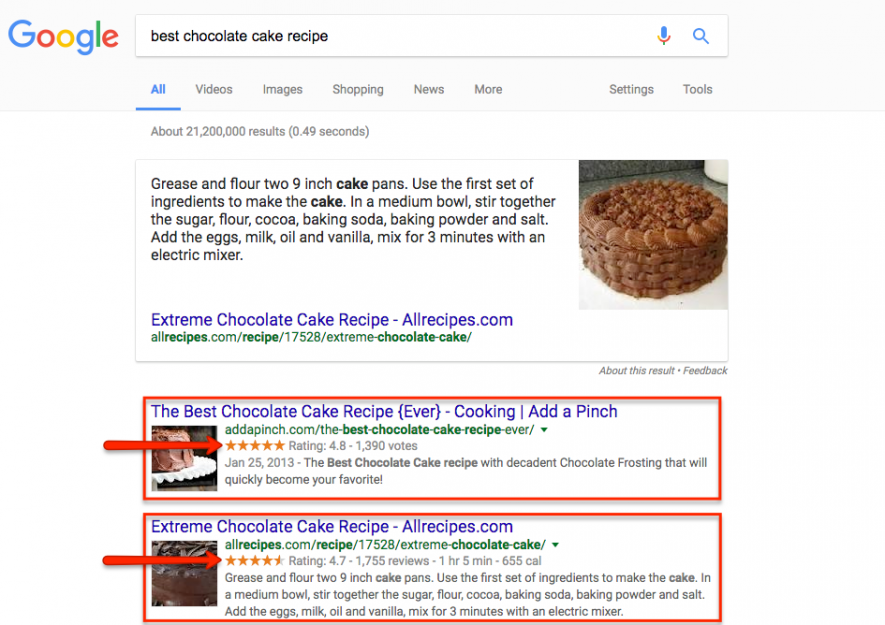 "Rich snippets" appearing below recipe results
"Rich snippets" appearing below recipe results
Or, with structured data on songs and albums, Google can show what songs an artist sings as a series of rich cards.
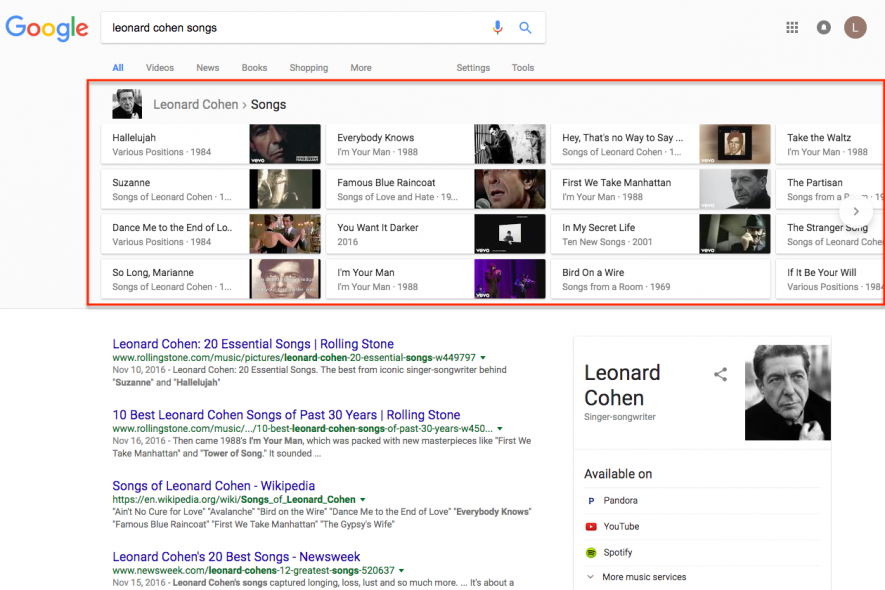 "Rich cards" appearing for music-related searches
"Rich cards" appearing for music-related searches
For SEOs and marketers, this means the more structured markups, the better. In fact, taking advantage of this trend by implementing structured data is being referred to as “semantic SEO.”
Semantic Search SEO
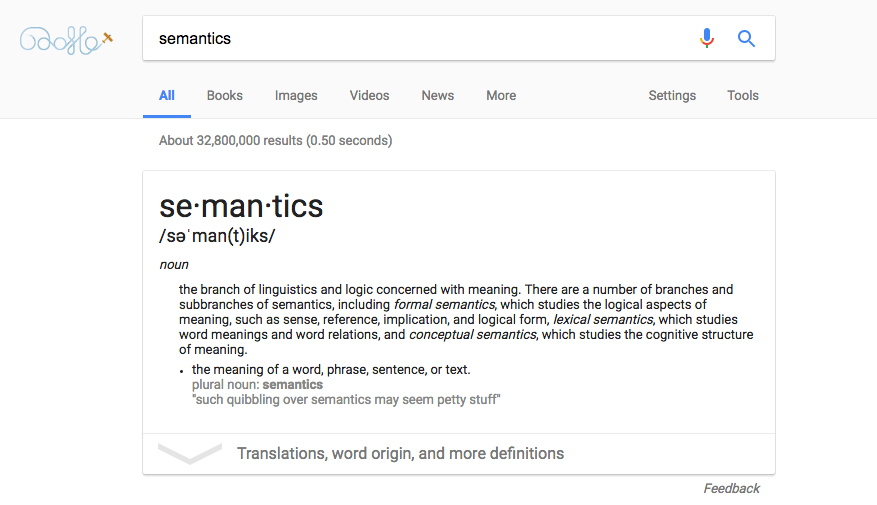 What are semantics?
What are semantics?
"Semantics" are defined as the branch of linguistics and logic concerned with meaning.
Essentially, structured data is Google’s way of using logic to find meaning from the keywords and websites in its index.
The more Google can operate on a semantic level, the more it can communicate with searchers in a logical way.
Hittail.com describes the semantic web as a shift towards a “coherent flow of information.”
Google is not just about simply discovering information any more — it’s about ordering the web into a coherent flow of information; how topics, themes, ideas, text, video, audio — all of it — is connected and relate to each other."
— Damian Thompson, What the Heck is Semantic SEO & Should You Care at All?
As the Internet continues to grow, the need for a more coherent flow of this information will naturally grow as well.
Now, it becomes the responsibility of SEO’s and website owners to keep up with this shift by implementing the correct structured data on their websites.
Specifically, Google recommends adding structured data markups on two types of things:
-
Content items, such as articles, recipes, or movies.
-
Lists of items, such as recipes and events.
So, how much is schema being used by the top businesses in the world?
Schema Use Among Fortune 500 Companies
We ran a quick study on the Fortune 500 companies using SEMrush data from the Site Audit tool to see how much schema markup is used by these companies.
After a Site Audit with a crawl limit of 20,000 pages on each site we found that 286 (57.2%) of the 500 domains were not using any schema markups at all. On the other hand, 214 (42.8%) of the domains used a schema markup on at least one page of their website.
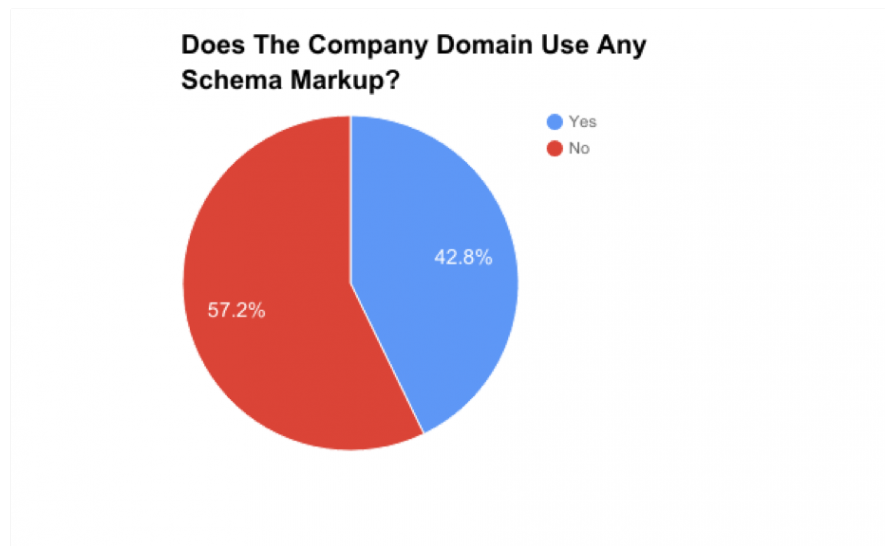
Next we took a look at the 214 domains that used schema and measured what percentage schema markups appeared on their sites.
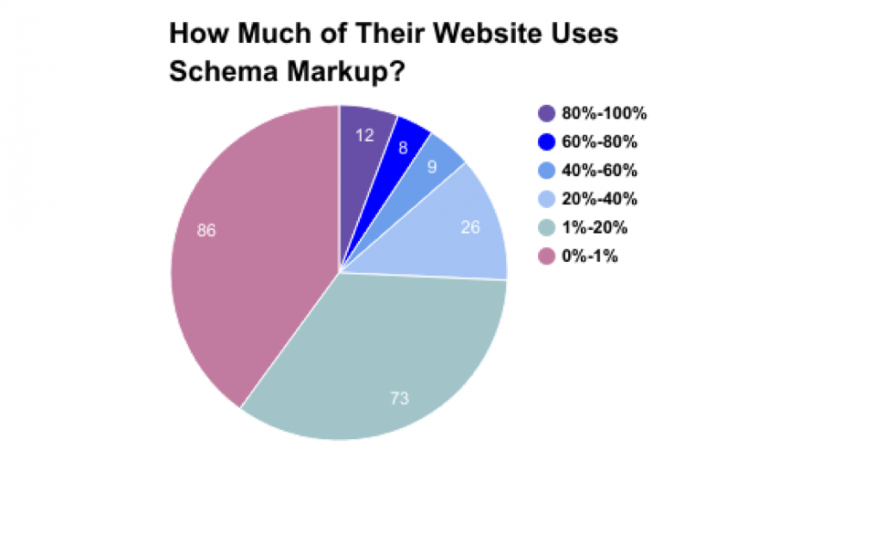
Out of this group, we found 86 domains in the Fortune 500 using schema on less than 1% of their pages, and only 12 domains using schema on 80-100% of their websites.
The 5 domains where we saw the highest percentage of schema were Progressive.com, BedBathandBeyond.com, Nordstrom.com, Dish.com, and HomeDepot.com, all of which used schema markup on at least 90% of the pages crawled.
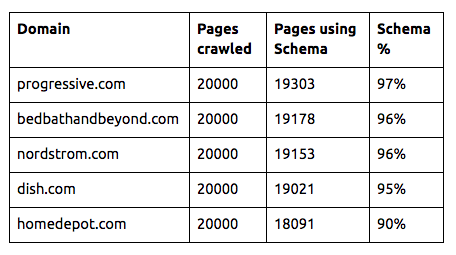 Most schema-using domains in the Fortune 500
Most schema-using domains in the Fortune 500
Lastly, we compared the popularity of schema to other forms of markups that the SEMrush Site Audit checks for; Twitter Cards, Open Graph, and Microformats.
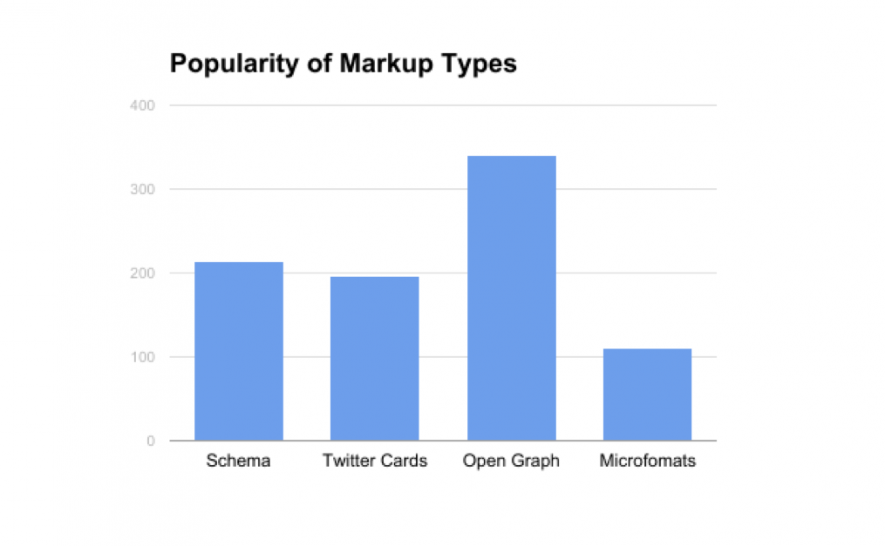 Markup types among Fortune 500 domains
Markup types among Fortune 500 domains
Among these markups, schema was the second-most popular (found 214 times), behind only Open Graph markups (341).
How to add Schema to Your Website
So, if you’re ready to get started adding schema to your site, there are a number of online tools to use to help you out.
Schema Markup Generator
This schema markup generator allows you to enter information about a local business, person, product, event, organization, or website to create a chunk of JSON-LD code to paste into your website’s HTML.
Schema Markup Validator
After you’ve added schema to your HTML, you can test the markups with Google’s Structured Data Testing Tool. Just drag and drop your webpage or line of code to test for any errors or warnings.
SEMrush Site Audit Tool
The SEMrush Site Audit tool checks for markups and will tell you what percentage of your website uses Schema, Open Graph, Twitter Cards, and Microformats.
Content Markup Guide
Google has a content markup guide for implementing Creative Work schema to acquire rich snippets. These markups applies to “any content produced for reading, viewing, or listening.” Things like videos, recipes, or music can all be marked up with Creative Work schema.
New Schema Developments
To stay up to date with all things schema markup, you can bookmark their releases page – where they list all updates and new vocabularies in their index. The most recent release, release 3.1 (August 2016), added a substantial vocabulary concerning hotels and related accommodation.
What tools do you use to add schema to your site?



